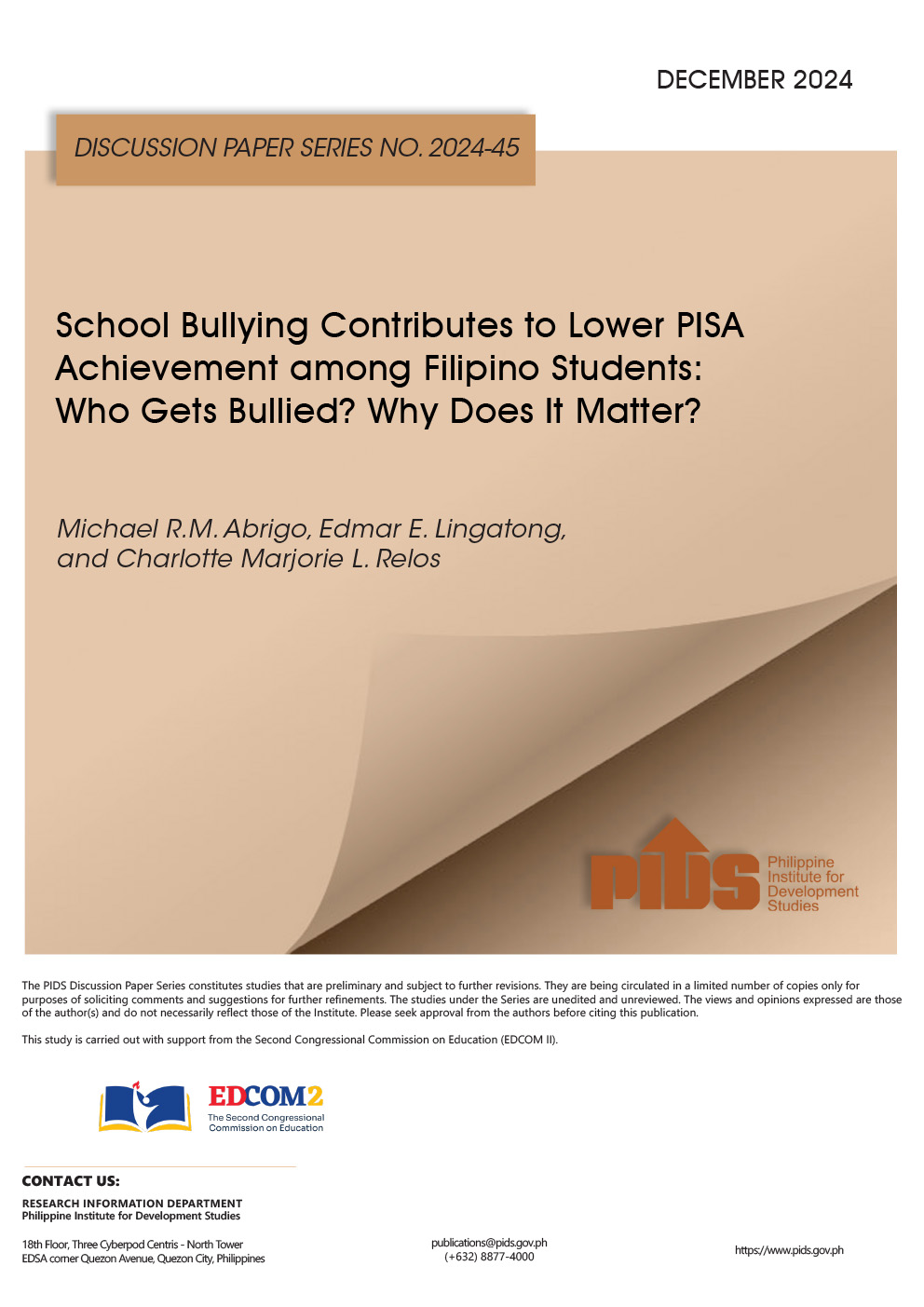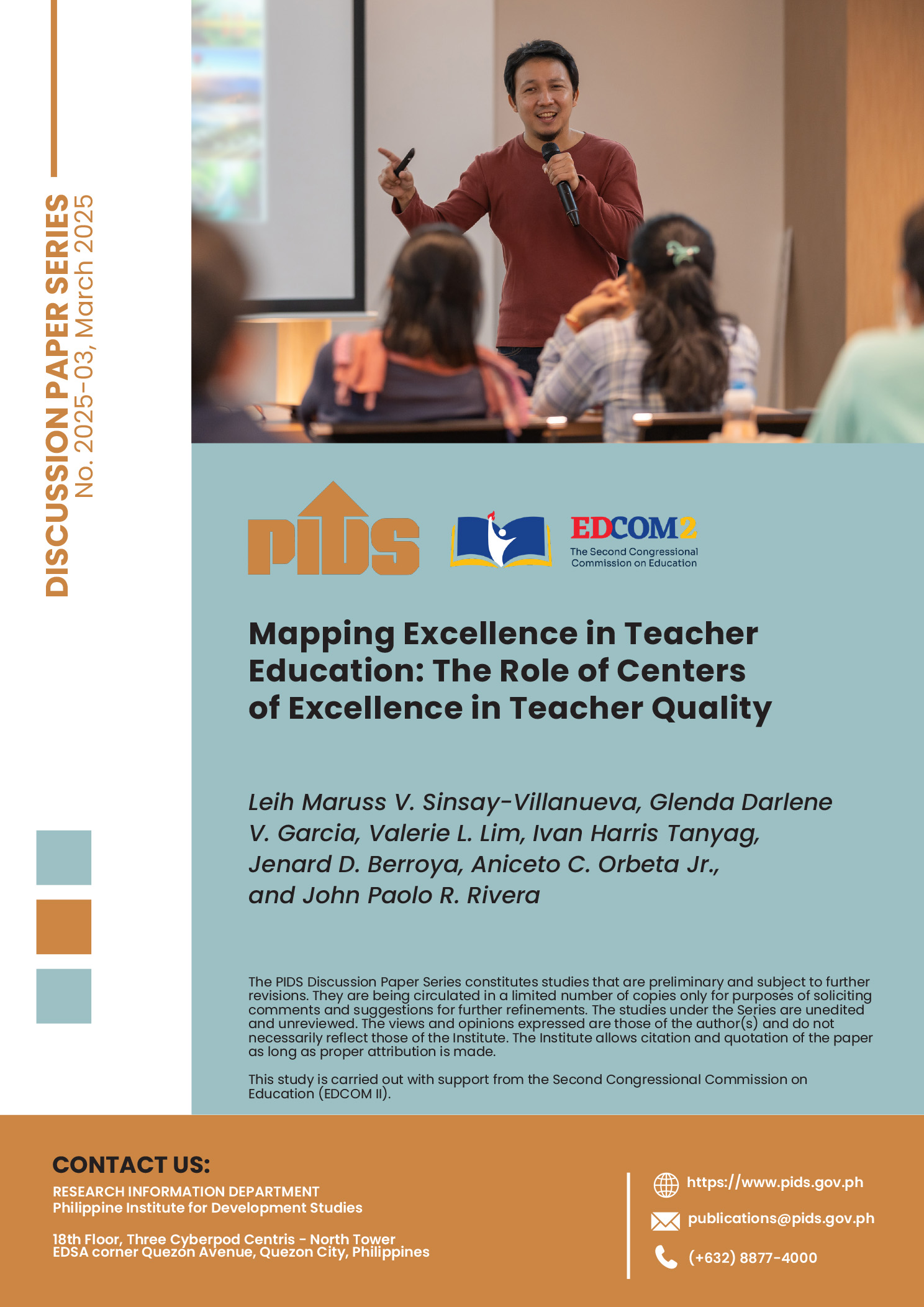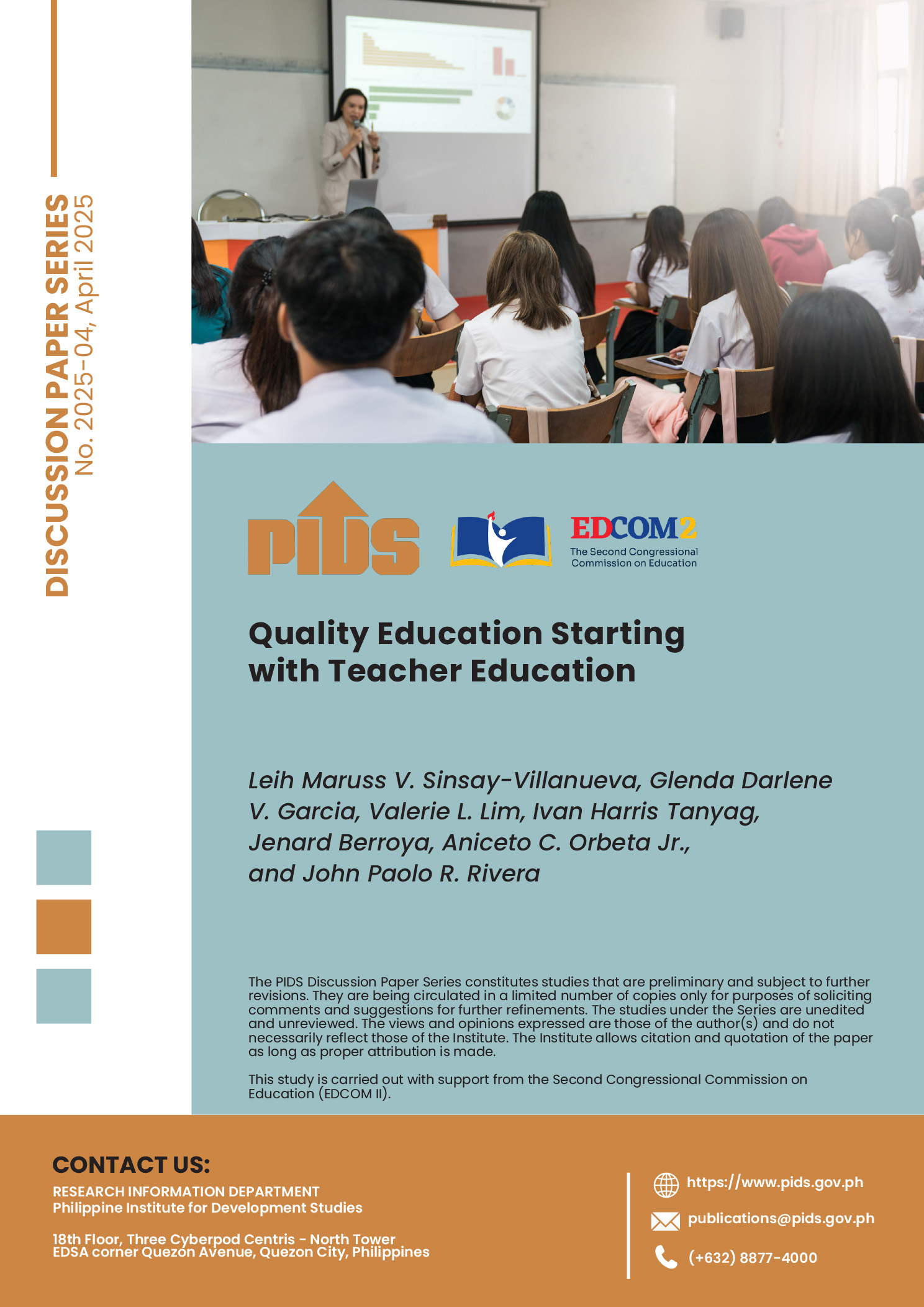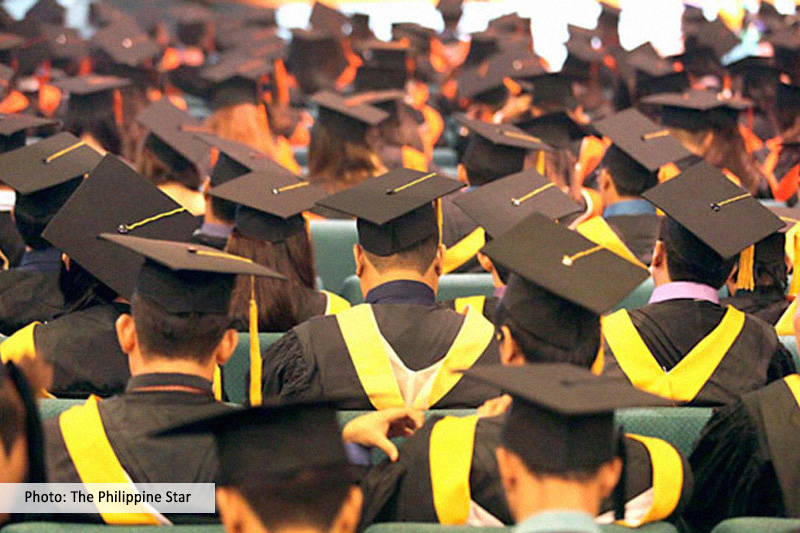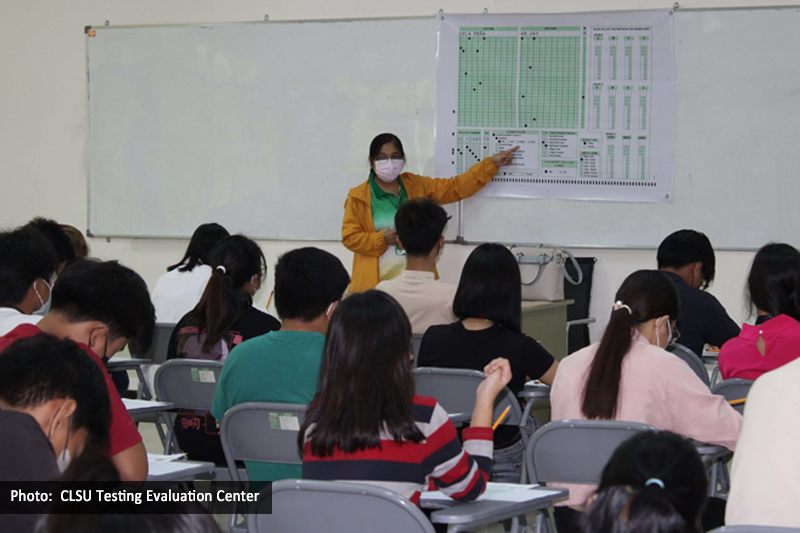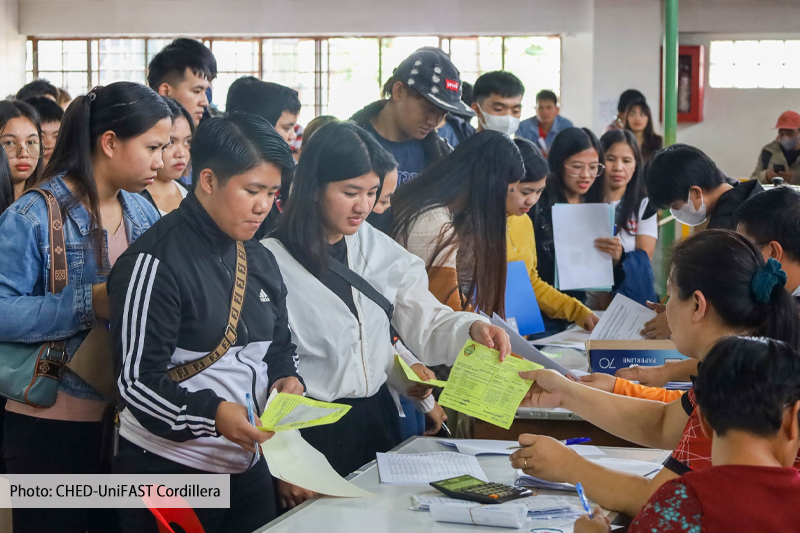
The Department of Education’s (DepEd) senior high school (SHS) program made a number of gains but also faced several challenges during the first two years of its implementation.
This is according to a study published by state think tank Philippine Institute for Development Studies (PIDS) titled, “Status of Senior High School Implementation: A Process Evaluation”, which looked at the three components of the program, namely, program theory, service delivery and utilization, and program organization. The study, conducted from July to December 2018, included actual interviews with DepEd officials from central and regional offices and SHS teachers and students.
Presenting the findings of the study in a public seminar organized by PIDS, co-author Karen Brillantes said that despite the program receiving mixed reactions, the enrollment “exceeded expectations” with a 93.3-percent transition rate from Grade 10 to Grade 11.
The study also noted that the modular delivery of the SHS curriculum, which does not require students to physically go to school every day, “has worked to bring back dropouts and potential dropouts to school”.
The program, according to Brillantes, has also encouraged “academically-challenged but skilled students” to remain in school.
“We got this from the experience of tech-voc students…These students, before, hindi sila na-encourage pumasok dahil they are not good academically, now na-engganyo silang pumasok sa school because nag-e-excel sila sa inaaral nila sa tech-voc. Because of that, they are able to remain in school,” Brillantes explained.
Despite the program’s gains, teachers and students continue to face a number of challenges, which Brillantes hoped are mere “birthing pains” that could be addressed as soon as “implementation procedures continue to stabilize and take root”.
For one, procurement issues affected the delivery of learning materials and equipment as well as building of school facilities.
There was also an “assumption that [the] necessary organizational and external support is present, such as the availability of qualified teachers or the openness of industries and businesses in employing SHS graduates”.
From the teachers’ perspective, results showed that “teachers expressed difficulties in developing the curriculum because of insufficient guidelines,” resulting in different interpretations, and thus, different practices in schools.
“At the central office level, they felt that preparations were sufficient, but these failed to [be cascaded] to the schools. It is mainly because of insufficient guidelines, inadequate materials, and preparation,” Brillantes said.
Teachers also expressed concerns about “too many administrative work” which, according to them, had affected their quality of teaching. Some also felt that the curricular content is “too ambitious”, saying that it is “designed for advanced learners”.
Issues on students’ difficulties to work on major projects such as research and performance tasks were also raised.
On the students’ side, they expressed “lack of choice in terms of tracks and strands due to supply side issues”, leaving some to take tracks that are not aligned with their interests. (READ: Sports, arts tracks least offered among SHS institutions)
Some students also reported to have experienced “culture shock” and felt that there are “too many requirements, topics, and performance tasks” in school.
In terms of program organization, the study noted that there is a need for better coordination with other agencies like the Commission on Higher Education and the Technical Education and Skills Development Authority to address student concerns.
The study urged DepEd to “make realistic assessment on the likelihood of delivery of program inputs considering procurement and capacity issues”. It also prompted the agency to “ensure the availability of all tracks and major strands in the provincial and regional levels” to address the students’ limited options.
For teachers, the study said DepEd should ensure that teachers are “better equipped and supported in delivering the curriculum”, as they are the biggest asset in the implementation of the SHS program. ###
This is according to a study published by state think tank Philippine Institute for Development Studies (PIDS) titled, “Status of Senior High School Implementation: A Process Evaluation”, which looked at the three components of the program, namely, program theory, service delivery and utilization, and program organization. The study, conducted from July to December 2018, included actual interviews with DepEd officials from central and regional offices and SHS teachers and students.
Presenting the findings of the study in a public seminar organized by PIDS, co-author Karen Brillantes said that despite the program receiving mixed reactions, the enrollment “exceeded expectations” with a 93.3-percent transition rate from Grade 10 to Grade 11.
The study also noted that the modular delivery of the SHS curriculum, which does not require students to physically go to school every day, “has worked to bring back dropouts and potential dropouts to school”.
The program, according to Brillantes, has also encouraged “academically-challenged but skilled students” to remain in school.
“We got this from the experience of tech-voc students…These students, before, hindi sila na-encourage pumasok dahil they are not good academically, now na-engganyo silang pumasok sa school because nag-e-excel sila sa inaaral nila sa tech-voc. Because of that, they are able to remain in school,” Brillantes explained.
Despite the program’s gains, teachers and students continue to face a number of challenges, which Brillantes hoped are mere “birthing pains” that could be addressed as soon as “implementation procedures continue to stabilize and take root”.
For one, procurement issues affected the delivery of learning materials and equipment as well as building of school facilities.
There was also an “assumption that [the] necessary organizational and external support is present, such as the availability of qualified teachers or the openness of industries and businesses in employing SHS graduates”.
From the teachers’ perspective, results showed that “teachers expressed difficulties in developing the curriculum because of insufficient guidelines,” resulting in different interpretations, and thus, different practices in schools.
“At the central office level, they felt that preparations were sufficient, but these failed to [be cascaded] to the schools. It is mainly because of insufficient guidelines, inadequate materials, and preparation,” Brillantes said.
Teachers also expressed concerns about “too many administrative work” which, according to them, had affected their quality of teaching. Some also felt that the curricular content is “too ambitious”, saying that it is “designed for advanced learners”.
Issues on students’ difficulties to work on major projects such as research and performance tasks were also raised.
On the students’ side, they expressed “lack of choice in terms of tracks and strands due to supply side issues”, leaving some to take tracks that are not aligned with their interests. (READ: Sports, arts tracks least offered among SHS institutions)
Some students also reported to have experienced “culture shock” and felt that there are “too many requirements, topics, and performance tasks” in school.
In terms of program organization, the study noted that there is a need for better coordination with other agencies like the Commission on Higher Education and the Technical Education and Skills Development Authority to address student concerns.
The study urged DepEd to “make realistic assessment on the likelihood of delivery of program inputs considering procurement and capacity issues”. It also prompted the agency to “ensure the availability of all tracks and major strands in the provincial and regional levels” to address the students’ limited options.
For teachers, the study said DepEd should ensure that teachers are “better equipped and supported in delivering the curriculum”, as they are the biggest asset in the implementation of the SHS program. ###

